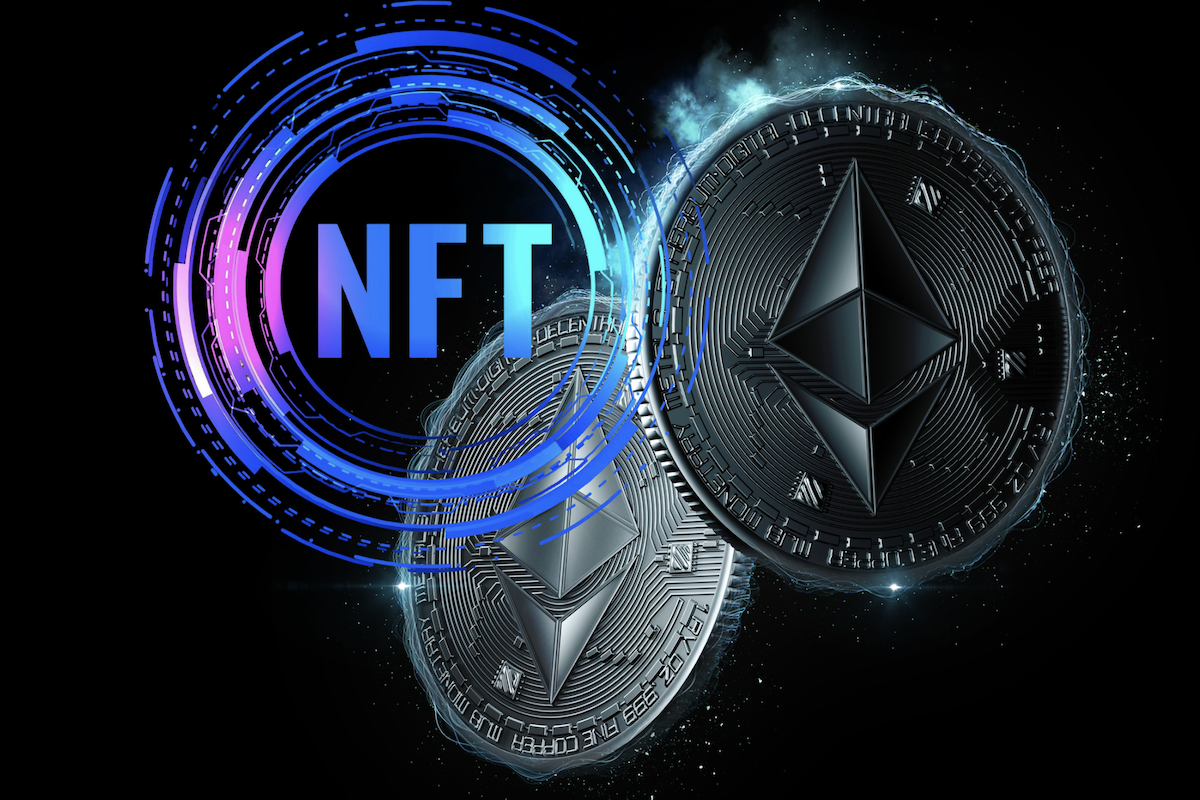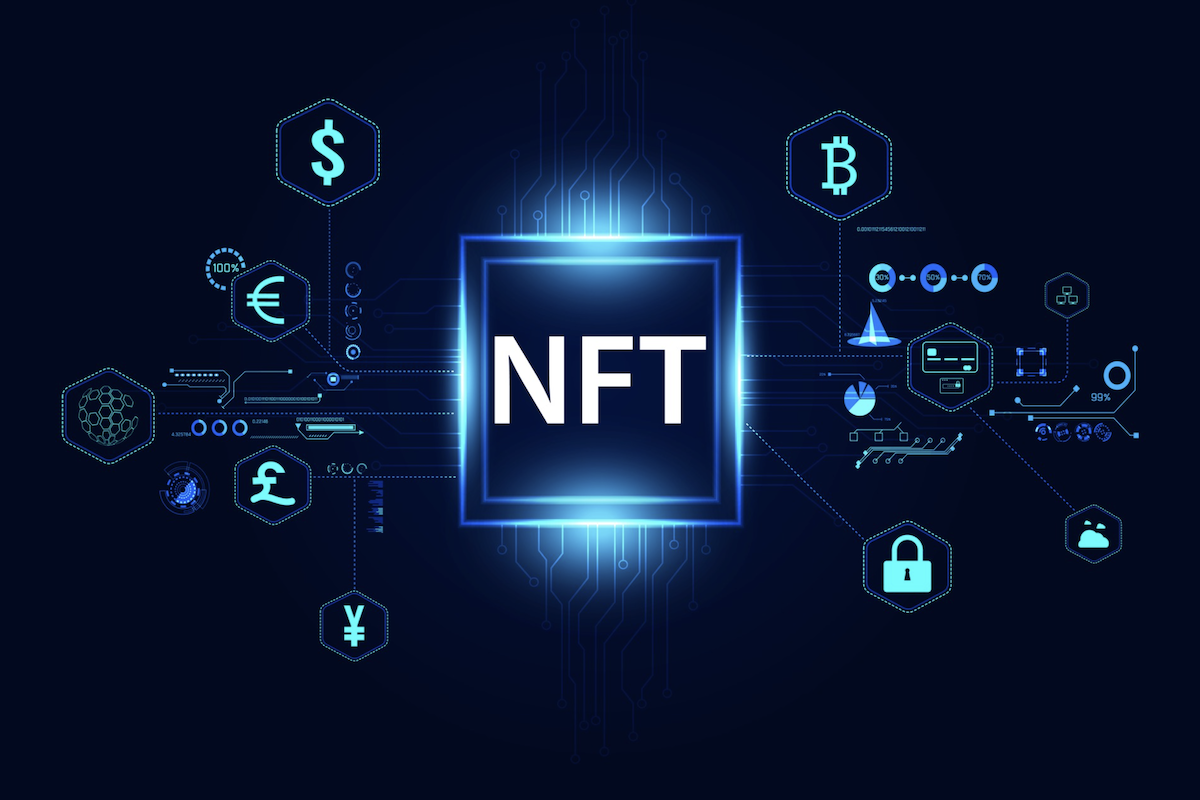Exploring the Metaverse: A Guide to Investing in Metaverse Stocks
Explore the transformative concept of the metaverse, where virtual reality, augmented reality, and digital economies converge to create immersive, interactive 3D spaces.

Envision a boundless digital universe where everyday work, play, and socializing occur in an interconnected virtual realm. That's the essence of the metaverse, an innovative concept revolutionizing how we interact with technology. Rooted in science fiction, specifically in Neal Stephenson's 1992 novel "Snow Crash," the term "metaverse" originally portrayed an alternate digital existence parallel to our physical world. Today's technology giants, including Meta Platforms (formerly known as Facebook), are working tirelessly to transform this fantasy into a tangible experience with the creation of virtual worlds catered for immersive user interactions.
The metaverse is a fusion of multiple technological elements such as virtual reality (VR), augmented reality (AR), and digital economies—shaping it as the next iteration of the internet. Here, individuals don't just browse content but exist within a 3D digital space where avatars represent them, offering an opportunity to explore, interact, and transact in real-time regardless of real-world geographic boundaries. The vision for the metaverse is an expansive digital dimension, providing a simulated environment accessible to an unlimited number of users simultaneously, ultimately redefining the human experience by enabling a mix of life-like social and commercial activities.
Key Components of the Metaverse
Delving into the realm of the metaverse, one encounters its key components that make it a truly transformative platform:
Immersive Experience
The metaverse delivers a level of immersion that goes beyond the flat screens and isolated interactions of traditional digital platforms. Through virtual reality headsets and other mixed reality tools, users can dive into 3D worlds, experiencing the virtual space almost as tangibly as the physical.
Real-Time Interactivity
Interactivity within the metaverse is not limited to pre-scripted or delayed responses. Instead, individuals can engage and interact with each other in real-time, fostering a sense of community and collaboration that mirrors real-world interactions.
Seamless Interoperability
A cornerstone of the metaverse is its interoperability, allowing the use of various devices and platforms to access and transition within its multiple environments. It means that users can expect a consistent experience across different virtual worlds and applications.
Economic Infrastructure
The metaverse is not merely an entertainment venue; it's a breeding ground for robust economic activity. Companies are investing in creating products and services to meet the needs of metaverse users, including digital assets like NFTs which serve as a medium to own and trade virtual and real-world goods.
Interactivity Beyond Gaming
While gaming has been a significant driver for early metaverse-related developments, the scope of the metaverse extends into areas like education, remote work, and commerce, to name a few, exemplifying its capability to support a wealth of activities far surpassing that of current gaming platforms.
These components are critical in cultivating the next wave of the internet, where users will not only observe content but also shape and directly influence the digital environments they inhabit. As technology progresses, the metaverse is poised to redefine human interaction, presenting a seamless blend of our physical and digital lives.
![]()
Understanding Virtual Worlds and Metaverse Platforms
The advent of virtual worlds and metaverse platforms has marked a pivotal shift in our digital interactions. At the heart of these immersive spaces lies a range of hardware and software designed to create experiences that engage users in a more comprehensive manner than ever before. Metaverse hardware, which currently revolves around VR headsets, is anticipated to evolve significantly, potentially integrating haptic devices to stimulate tactile sensations and enrich the virtual experience. Moreover, sophisticated software solutions capable of crafting intricate 3D environments, interactive platforms, and the requirement for high-speed connectivity are foundational to the development and flourishing of these digital realms.
One cannot overlook the massive financial commitments companies like Meta Platforms have made towards crafting their vision of the metaverse. With initiatives like Horizon Worlds and Horizon Workrooms, Meta Platforms has pledged roughly $10 billion in 2022 alone towards these goals. This race is not without its strong competitors—companies like Snap and Nvidia are funnelling significant capital into the metaverse, with Meta Platforms especially dominating in the arena of hardware development and infrastructure expenditure.
As these companies forge ahead, they lay the groundwork for what is likely to become an integral part of our digital future. Understanding the dynamic architecture of virtual worlds and metaverse platforms is thus not only a technological pursuit but also a window into the next evolution of human connectivity and interactivity.
Popular Virtual Worlds and Metaverse Platforms
Navigating the expanse of virtual worlds and metaverse platforms, one would encounter prominent players shaping the landscape. Microsoft, recognized for its long-standing dominance in the software industry, steps into the metaverse through offerings like Minecraft and Mesh. These platforms cover the gamut from gaming to office collaboration, hinting at the vast potential of the metaverse in blending leisure with productivity.
Autodesk is another innovator, supplying 3D design and simulation software that enables users to construct digital twins—accurate virtual replicas of objects from the real world—and perform simulations within the metaverse. Unity Software, synonymous with game development, has expanded its focus to support the digital evolution, forming partnerships to create persistent virtual spaces for events such as live music performances.
Snap may not be a titan in the hardware sector but instead channels its efforts into the metaverse's R&D. As the parent company of Snapchat, it remains committed to contributing to this digital evolution, indicating the broad-spectrum interest and investment that the metaverse commands across varied technology sectors.
The Role of Artificial Intelligence in Virtual Worlds and Metaverse Platforms
The fusion of artificial intelligence (AI) with virtual worlds and metaverse platforms holds great promise in driving their future. Companies like Meta are pivoting toward leveraging generative AI for crafting interactive, ever-evolving virtual environments. These AI models can autonomously generate new content, from landscapes to avatars, enhancing the fluidity and dynamism of the metaverse.
Partnerships like the one between Qualcomm and Meta, which focus on creating state-of-the-art virtual reality chips and systems, underscore the significance of advanced technology in sculpting the metaverse's underpinnings. Such alliances are indispensable for advancing the capabilities of immersive experiences.
Meanwhile, industry heavyweight Nvidia is delivering the requisite horsepower with its top-tier graphics and video processing chips. These components are not simply vital for high-end computing but are also pivotal in AI processes and VR applications, which are the backbone of a seamlessly operating metaverse.
AI's integration into virtual worlds is not lost on technology companies; it represents a strategic pivot from mere experimentation to the commercialization of the metaverse. This transition speaks volumes about the industry's belief in the metaverse's potential to bring forth a new era of interaction within the fabric of our increasingly digital society.

The Role of Virtual Reality in the Metaverse
Virtual Reality (VR) is often considered a cornerstone technology for the metaverse, providing the most immersive way for users to engage with these expansive virtual worlds. By donning a VR headset, users step beyond the confines of physical reality, entering a digital universe replete with endless possibilities. Here, individuals are free to construct and customize digital avatars, through which they interact with the environment and other users in real-time—a key functional feature for personal expression within the metaverse.
This customizable nature extends into a virtual economy, wherein metaverse operators foresee considerable revenue streams, including the sale of premium avatar accessories or exclusive digital attire. The allure of a truly immersive experience makes VR headsets the ideal gateway to the metaverse, although accessibility is presently accommodated across various devices to encourage widespread adoption.
Developers and businesses alike are envisioning the metaverse as the next frontier for digital commerce and community engagement. The ability for businesses to establish meeting venues, run virtual storefronts, and foster consumer relationships signals a transformative potential for the internet as we know it, translating use cases from the traditional web into this all-encompassing digital realm.
Virtual Reality and Mixed Reality in the Metaverse
The visionary scope of the metaverse is further enhanced by mixing reality (MR) technology, which blends the physical and digital worlds together. Users of MR can interact with real-world objects while simultaneously engaging with the virtual elements of the metaverse. This fusion creates a layered experience that elevates the utility of the metaverse beyond purely virtual activities.
Here's a look at the role of VR and MR in the metaverse:
Virtual Landscapes: Digital territories within the metaverse, where avatars can traverse and interact.
Interconnectivity: A network of 3D spaces where users can socialize, conduct business, exchange ideas, or relax.
Immersive Environments: Computer-generated settings that convincingly emulate real-world physics and appearances.
Mixed Realities: The merging of tangible and virtual elements to allow for new forms of interaction and exploration.
As VR sets the stage for the metaverse, providing a gateway to these full-bodied digital experiences, MR technology concurrently bridges the gap, ensuring that the virtual and physical realms are not mutually exclusive but rather complementary. The shared spaces of the metaverse become more tangible and applicable to everyday life as users manipulate digital content that responds to physical cues in real-world environments.
Both VR and MR are instrumental in realizing a cohesive metaverse, promising a future where virtual spaces are as nuanced and influential as the physical places we inhabit today. As technology progresses, the potential for these mixed realities to enhance not only entertainment but also education, industry, and social connectivity is bound to grow, marking a significant milestone in human interaction and digital integration.
Thus, embracing VR and MR not only enriches the user experience but also broadens the horizons for what the metaverse can become—a testament to our advancing technological capabilities and the imagination that fuels them.
Digital Assets: The Currency of the Metaverse
Cryptocurrencies have emerged as the de facto medium of exchange in the metaverse, with specific digital currencies, like Decentraland's MANA, The Sandbox's SAND, Star Atlas's ATLAS, and Axie Infinity's AXS, becoming popular for facilitating transactions within these expansive virtual universes.
Here’s a quick look at these metaversal currencies and their associated platforms:
Decentraland (MANA): Buy virtual plots of land and interact within a decentralised virtual community.
The Sandbox (SAND): Acquire digital assets and create experiences on user-generated land plots.
Star Atlas (ATLAS): Engage in a space-themed multiplayer metaverse with a comprehensive economy.
Axie Infinity (AXS): Invest in and breed unique digital creatures known as Axies for gameplay.
These currencies are intrinsic to the metaverse's burgeoning economy, often used for the purchase of highly coveted NFTs. Major brands and auction houses have begun to ride the wave of NFT marketplaces, harnessing their immense potential to transact in high-value digital collectibles, virtual artwork, and even digital soundtracks.
Platforms like Decentraland and The Sandbox have further cemented the role of NFTs by treating them as in-game assets and offering platform-native tokens. This confluence of gaming and blockchain enables a thriving digital landscape where the boundary between the virtual and the financial is continuously blurred.
NFTs not only represent ownership but also serve to validate the uniqueness and provenance of digital assets within the metaverse economy. Blockchain technology, the underpinning architecture of NFTs, ensures the integrity and security of these assets, thus empowering users with confidence in their digital transactions.
As the metaverse expands, it redefines the concept of currency and ownership, positioning cryptocurrencies and NFTs at the center of a digital economic revolution. Engaging in this virtual marketplace offers an insight into a future where digital spaces echo the dynamics of our physical economies, yet with a level of immediacy and invention that could only be realized in a world unconstrained by physical limitations.

Exploring the Metaverse Market and Investment Opportunities
Investing in the burgeoning space of the metaverse not only encapsulates immersion into virtual realities but also presents a diverse spectrum of financial opportunities. For those hesitant to navigate the complex realm of direct digital asset acquisition, stocks and Exchange-Traded Funds (ETFs) offer a more traditional pathway. They provide an accessible bridge to the metaverse market, requiring no intimate involvement with the metaverse platforms themselves and can be traded using familiar currencies such as U.S. Dollars.
Beyond metaverse-related equities, some investors also explore stocks linked to clinical trials and drug approvals, since biotech movements tied to FDA decisions can create significant volatility and high-growth opportunities.
The allure of metaverse ETFs lies in their relatively low entry barriers, with some funds allowing investments starting from $1,000, though it is important to have a foundational understanding of the stock market's workings before diving in. Yet, for those with an entrepreneurial spirit, the metaverse also opens the virtual door for direct engagement through NFTs. From artists to developers, individuals can create and sell unique digital assets on metaverse marketplaces, fully leveraging the potential of this digital frontier.
Positioned to fundamentally transform the way we work, the metaverse supports remote, home, and hybrid working patterns by introducing new collaborative experiences. This shift heralds novel opportunities for those companies that are engaging with and developing metaverse technologies. Prominent among these are technology giants such as Meta (formerly Facebook), Roblox, Microsoft, Apple, Unity, and Cloudflare, which present enticing investment options for those interested in purchasing metaverse stocks.
Metaverse Stocks to Watch
When considering a foray into metaverse investments, it is essential to identify those companies poised to shape the virtual worlds. A prime example is Meta Platforms (NASDAQ: META), which, beyond its core revenue from social media advertising, is deeply invested in the metaverse through its Reality Labs division specializing in hardware devices and VR content.
Similarly, Apple Inc. (NASDAQ: AAPL) emerges as a notable player. Its efforts to launch the Apple Vision Pro mixed-reality headset and develop VisionOS for spatial computing unequivocally signal its dedication to establishing a stake in the metaverse. Alongside these, NVIDIA Corporation (NASDAQ: NVDA), a manufacturer of video cards, is essential to render the visually-intensive environments of the metaverse, presenting a robust investment prospect given the continuous demand for their powerful GPUs.
Another important facet of the metaverse infrastructure is cloud computing, with Amazon.com, Inc. (NASDAQ: AMZN) leading via AWS, facilitating vast digital realms. Unity Software (NYSE: U) rounds out this watchlist as a software titan that equips creators with the tools required to craft immersive experiences within the virtual environment.
| Company | Ticker | Metaverse Significance |
|---|---|---|
| Meta Platforms | NASDAQ: META | Reality Labs and virtual environments |
| Apple Inc. | NASDAQ: AAPL | Mixed-reality headsets and spatial computing |
| NVIDIA Corporation | NASDAQ: NVDA | GPU manufacturing for metaverse visuals |
| Amazon.com, Inc. | NASDAQ: AMZN | Cloud infrastructure for virtual worlds |
| Unity Software | NYSE: U | Software for creating metaverse experiences |
Investing in Metaverse ETFs: The ProShares Metaverse ETF
Exchange-Traded Funds present a diversified approach to the metaverse market, and the ProShares Metaverse ETF is a distinguished figure in this arena. Launched in early 2022, it selectively invests in companies expected to thrive from the growth of the metaverse. Its portfolio is an emblem of diversity, spanning sectors from semiconductors to software & services, and is dominated by captivating US-based companies.
The fund's strategic allocation earmarks about 45% of its assets to top-tier stocks, including industry leaders such as Kopin Corp, Amazon, Roblox Corp, Vuzix Corp, and Apple. The ProShares Metaverse ETF is especially appealing to investors due to its relatively low expense ratio, making it competitively cost-effective against other similar ETFs.
Metaverse Cryptocurrencies: Potential Investments
For investors seeking a more direct stake in the metaverse's evolution, cryptocurrencies like ether (ETH), Decentraland (MANA), and Axie Infinity (AXS) offer a way to harness this sector's growth. These currencies are pillars of their respective metaverse-related projects, where participants buy, sell, and interact with digital goods and services.
While cryptos are integral to technology development in the metaverse, potential investors must be cognizant of the heightened volatility common in this asset class. A well-informed investment strategy can, however, unlock significant potential as metaverse cryptocurrencies continue to play a pivotal role in the expanding digital universe. Investing in these currencies goes beyond mere speculation; it's a bet on the future landscape of interactive digital spaces.
| Currency | Use in Metaverse | Platform |
|---|---|---|
| Ether (ETH) | Development and transactions | Ethereum-based projects |
| Decentraland (MANA) | Transactions and purchases | Decentraland |
| Axie Infinity (AXS) | Gaming and breeding digital creatures | Axie Infinity |
As the metaverse industry grows, opportunities for investment proliferate, each with distinct pathways and risks. Whether through stocks, ETFs, or cryptocurrencies, the metaverse market beckons with a promise of innovation and transformation that continues to lure investors to its virtual doorstep.





